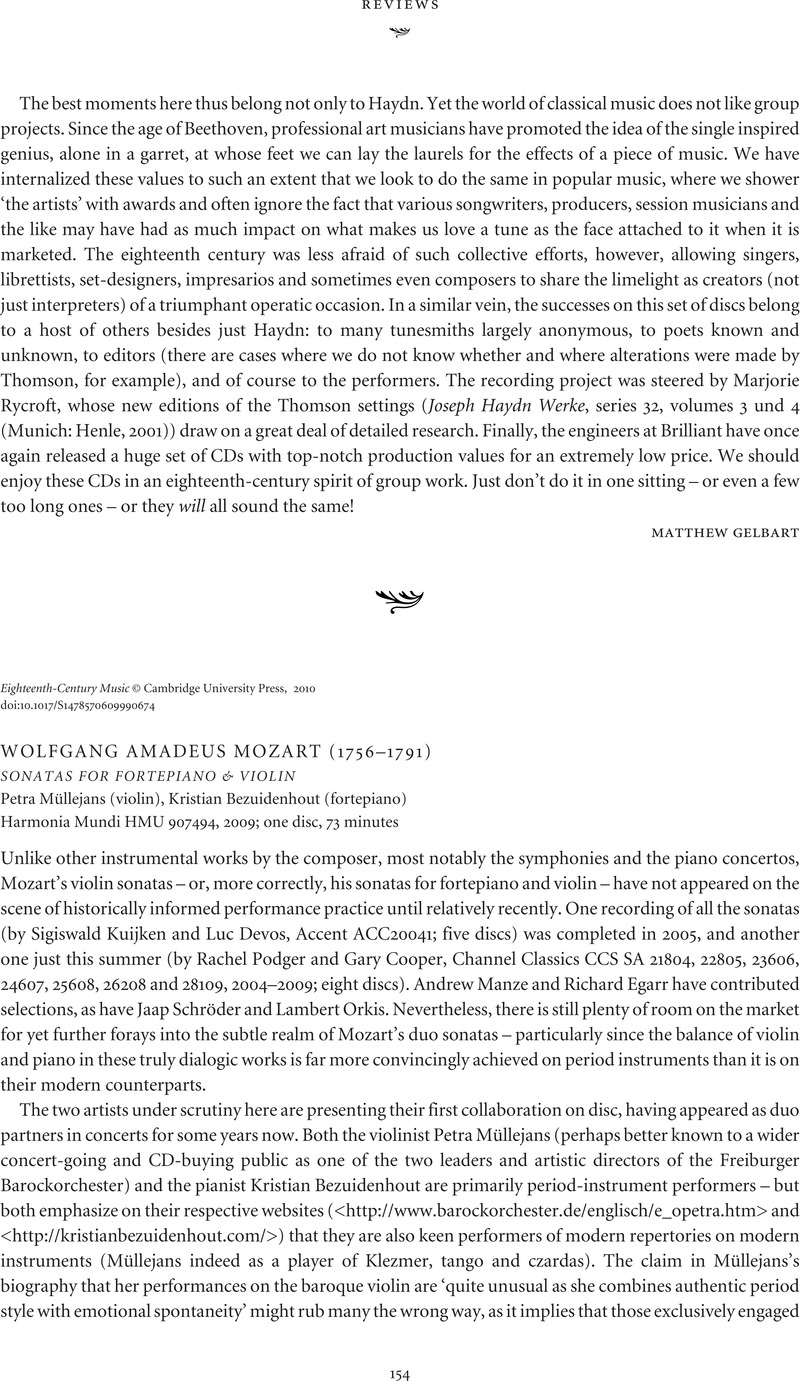No CrossRef data available.
Article contents
WOLFGANG AMADEUS MOZART (1756–1791) SONATAS FOR FORTEPIANO & VIOLIN Petra Müllejans (violin), Kristian Bezuidenhout (fortepiano) Harmonia Mundi HMU 907494, 2009; one disc, 73 minutes
Published online by Cambridge University Press: 21 January 2010
Abstract
An abstract is not available for this content so a preview has been provided. Please use the Get access link above for information on how to access this content.

- Type
- Reviews: Recordings
- Information
- Copyright
- Copyright © Cambridge University Press 2010


